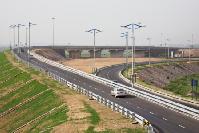
IDFs are investment vehicles for channelizing investment into the infrastructure sector. They are sponsored by commercial banks and NBFCs in India in which domestic/offshore institutional investors, specially insurance and pension funds can invest through units and bonds issued by the IDFs.
According to the RBI, “IDFs would essentially act as vehicles for refinancing existing debt of infrastructure companies, thereby creating fresh headroom for banks to lend to fresh infrastructure projects.”
Infrastructure Debt Funds (IDFs) can be set up either as a Trust or as a Company. A trust based IDF would normally be a Mutual Fund (MF), regulated by SEBI, while a company based IDF would normally be an NBFC regulated by the Reserve Bank. Hence, there are two types of IDFs: IDF-MFs and IDF-NBFCs. IDF-MFs can be sponsored by banks and NBFCs. Whereas IDF-NBFCs can be sponsored by banks and Infrastructure Finance companies. ‘Sponsorship’ means an equity participation by the NBFC between 30 to 49% of the IDF.
- Trust based IDF will be formed as a Mutual Fund, regulated by SEBI
- Company based IDF will be formed as NBFC, regulated by RBI
IDF-NBFC
An IDF-NBFC is a company and comes under the regulation of RBI. IDF-NBFCs would take over loans extended to infrastructure projects which are created through the Public Private Partnership (PPP) route and have successfully completed one year of commercial production. Such take-over of loans from banks would be covered by a Tripartite Agreement between the IDF, Concessionaire and the Project Authority for ensuring a compulsory buyout with termination payment in the event of default in repayment by the Concessionaire.
Eligibility parameters for NBFCs as sponsors of IDF-MF
NBFCs sponsoring IDF-MFs are required to comply with the following requirements:
- The NBFC should have a minimum Net Owned Funds (NOF) of Rs.300 crore; and Capital to Risk Weighted Assets (CRAR) of 15%;
- its net NPAs should be less than 3% of net advances;
- it should have been in existence for at least 5 years;
- it should be earning profits for the last three years and its performance should be satisfactory;
- the CRAR of the NBFC post investment in the IDF-MF should not be less than the regulatory minimum prescribed for it;
- The NBFC should continue to maintain the required level of NOF (Net Owned Fund) after accounting for investment in the proposed IDF and
- There should be no supervisory concerns with respect to the NBFC.
The existing Infrastructure Finance Company NBFCs (NBFC-IFC) can also sponsor IDFs. They have to meet the conditions for sponsoring an IDF-NBFC.
Here, sponsor IFCs would be allowed to contribute a maximum of 49 percent to the equity of the IDF-NBFCs with a minimum equity holding of 30 percent of the equity of IDF-NBFCs, should follow minimum CRAR and there should not be any supervisory concerns.
*********









